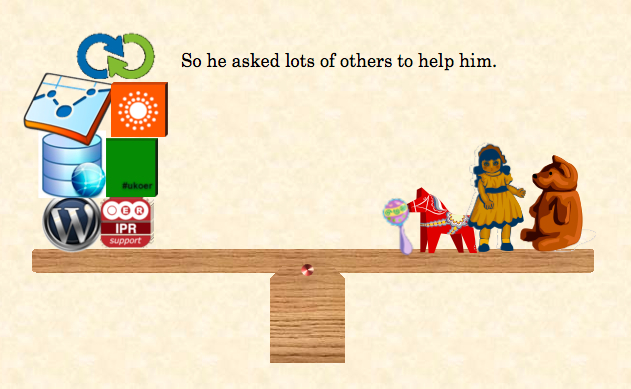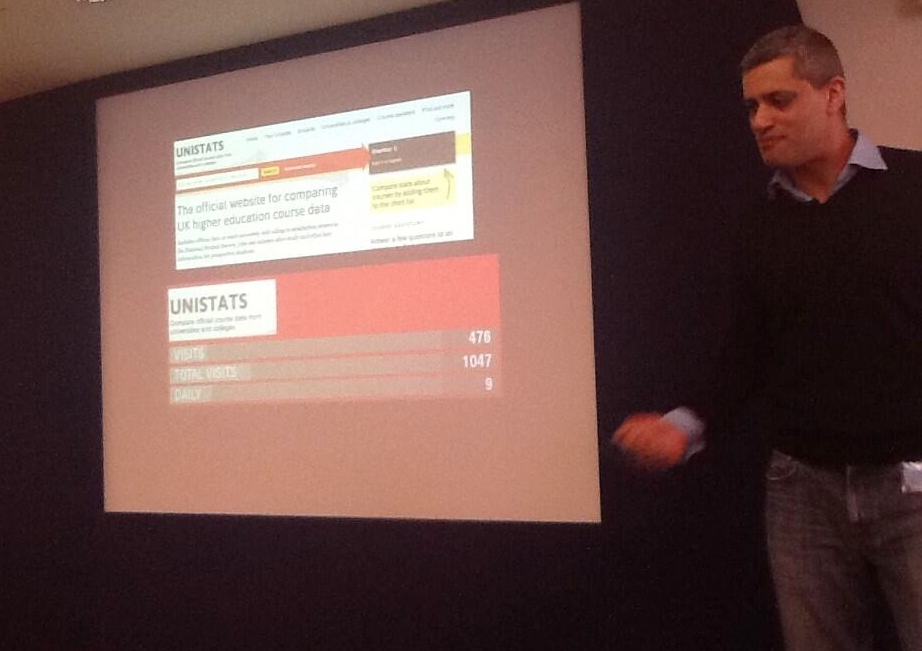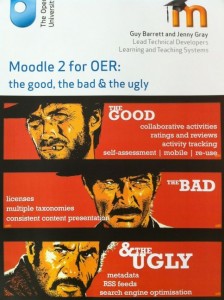The theme of this years CETIS conference was Open for Education: Technology Innovation in Universities and Colleges, as usual we had a wide and diverse range of sessions but if there was one theme that underpinned them all it was how can we sustain innovation in the face of the challenges currently facing the sector?
Sustainability was the explicit theme of the Open Practice and OER Sustainability session Phil and I ran. Three years of HEFCE UKOER funding came to an end last autumn and, while there’s no denying that the programmes produced a significant quantity of open educational resources, did they also succeed in changing practice and embedding open education innovation across the English HE sector? Judging by the number of speakers and participants at the session I think it’s fair to say that the answer is a resounding “Yes”. At least in the short term. Patrick MacAndrew, who has been involved in organising this year’s OER13 conference, pointed out that while they expected a drop in numbers this year, as UKOER funding has ended and the event is not running in conjunction with OCWC, in actual fact numbers have risen significantly. Practice has changed and many institutions really are more aware of the potential and benefits of open educational resources and open educational practices. Though as several participants pointed out, MOOCs have rather eclipsed OERs over the last 12 months and the relationship between the two is ambiguous to say the least. As Amber Thomas put it: “MOOCs stole OERs girlfriend”.

David Kernohan used the memorable image of a teddy bear lecturer playing happily on a seesaw with his friends and with lots of open educational resources and innovative technologies until all the money ran out and all that was left was the teddy bear and the resources. However I can’t help thinking that the real threat to OER sustainability is that the next thing to disappear might be the teddy bear, and after all it’s the teddy bears, or rather the people, that sustain communities of innovation and practice. With this in mind, there was some discussion of the importance of subject communities in sustaining innovative educational practice and Suzanne Hardy of Newcastle reminded us that Humbox, an excellent example of an innovative and sustainable development presented by Yvonne Howard of Southampton, was originally a collaboration between four HEA subject centres. The legacy of the subject centres is certainly still visible in the sector, however as many talented people have had to move into other roles and those that have managed to hang on are increasingly under threat, how much longer will the community of open educational innovation be able to sustain itself?
The latter half of Scott Wilson’s session on Open Innovation and Open Development also focused on sustainability and again the discussion circled round to how can we sustain the community of developers that drive innovation forward? It’s more years than I can recall since their demise, but the CETIS SIGS were put forward yet again as a good model for sustaining innovative communities of developers and practitioners. I also suggested that it was still possible to see the legacy of the SHEFC Use of the MANs Initiative in the sector as a surprising number of people still working in educational technology innovation first cut their teeth on UMI projects.
There was some discussion of the emergence of “boundary spanning people and blended professionals” but also a fear that institutions are increasingly falling back on very traditional and strictly delineated professional roles. At a time when innovation is increasingly important, many institutions are shedding the very people who have been responsible for driving innovation forward in the sector. At the end of the session, Scott asked what is the one thing that organisations such as Cetis and OSSwatch should do over the next six months to help sustain open innovation and open development? The answer that came back was Survive! Just survive, stay alive, keep the innovation going, don’t loose the people. The fact that Scott was wearing a zombie t-shirt while facilitating the session was verging on the poignant :}
Meanwhile over in Martin Hawksey and David Sherlock’s Analytics and Institutional Capabilities session Ranjit Sidhu of SiD was laying into all manner of institutional nonsense including the sector wide panic that followed clearing, the brutal reality of the competitive education market, the millions spent on google advertising, the big data projects that are little more than a big waste of money and, last but not least, the KIS. Ranjit showed the following slide which drew a collective murmur of horror, though not surprise, from the audience.

If you look carefully you’ll notice that the number of daily request to Unistats for data is….9. Yep. 9. It hasn’t even hit double figures. One colleague who was responsible KIS returns recently estimated that the cost to their institution was in the region of a hundred thousand. Multiply that across the sector…Does anyone know what the total cost of the KIS has been? And the return on investment? As one participant commented in response to Ranjit’s presentation, KIS is not a tool for students, it’s a tool to beat VCs over the head with. I’ll leave you to draw your own conclusions…
I think it’s fair to say that a lot of us went to CETIS13 not knowing quite what to expect and even fewer of us know what the future holds. Despite these uncertainties the conference had a noticeably positive vibe, which more than a few people remarked on over the course of the event. We’re all living in “interesting times” but the brutal reality of the crisis facing HE has done little to dent people’s belief that sustaining open innovation, and the community of open innovators, is a fundamental necessity if the sector is to face these challenges. I certainly felt there was a real spirit of determination at CETIS13, here’s hoping it will see us through the “interesting times”.
